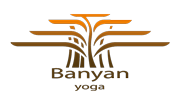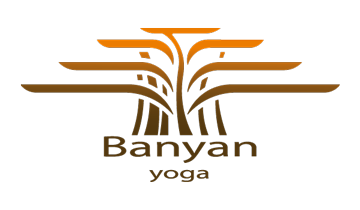With Ashtanga yoga the asana’s (postures) are being practiced in the given order of the Primary Series, a continuous flow in the rhythm of the uyajji-breath. Each in- and exhalation is linked to a movement to go into or come out of a pose, which is called vinyasa. Each class opens with sun-salutations (warming-up). After this the asana’s are performed in a specific order (first standing postures, than sitting postures, and after the lying postures ending with the finishing sequence) based on thousands of years old basic principles and scriptures. Each posture prepares you mentally and physically for the next. The pillars for Ashtanga yoga are:
- The Ujjayi Breath (sound breathing),
- Vinyasa (the sequence of postures, synchronised with the breath),
- The Dhristi (the focus, where to look), and
- The Bandha’s (the energy locks).
The Ujjayi Breath heats up the body from within. This cleanses all muscles and organs, drains toxics, stimulates the blood circulation strengthens the mind. Next to that there’s the cardiovasculaire aspect. The asana’s are performed on the rhythm of this breathing (flow, aka vinyasa). The pace of an Ashtanga class is quite high, and because the series has a certain sequence, it might be something you need to get used to at first. So to give it an honest go and to get familiar with the sequence you want to give it at least a month.
Ashtanga Led is a class in which the teacher verbally conducts. You’ll learn the sequence of (a part of) the Primary Series of the Ashtanga system.
Ashtanga Mysore is the traditional way Ashtanga yoga is being taught/learned. You practice in a group but in your own pace, following the rhythm of your own breath and to your own ability. The teacher gives individual guidance, and adjusts or helps you deeper in the poses. It’s like a private class, but in a group form. This class is very suitable for beginners.
In this lesson the focus lies on strengthening the body, making it more flexible and increasing the level of your concentration on calm and regular breathing. The postures (asana’s) are performed separate from each other, are being held for sometime before released to go to the next. The asana’s are not performed in a flow.
Pilates focusses on both superficial and deeper core muscles. The core muscles are important for stabilizing our joints. The focus of these lessons lies in strengthening the core of the body (Powerhouse) and is basically made up of ground exercises. A great way to work out and achieve tight buttox, legs and abs. And because Pilates also focusses on developing a strong and stabile back, it is very well suited for as well as beginners and advanced practitioners and for most people suffering from back pains. The keywords for Pilates are: stability, flexibility and body control.
Pilates is developed by Joseph Pilates. The purpose of Pilates was to build up the resistance against illnesses. This was realised by strengthening the muscles, improving flexibility, concentration and health in general. Pilates is a work-out for the whole body, but focusses on the core muscles. Pilates was developed in the 20th century. Joseph was way ahead of his time. His recognition came at the beginning of this century. In the US alone more than 10 million people practice Pilates, a number which is still growing. Also in Holland the number of practitioners increase by the day.
Pilates is a body & mind trainings method for the complete body, focussing on: strength, flexibility, balance and controle. Pilates is all about conscious training of the body. Focus lies on breathing and and body postures. This training is a group exercise with music. You become more agile while strengthening your muscles. A well balanced development of all muscle groups.
Vinyasa (means flow) is an active form of Yoga where one pose will take you to the next, in a flow. Breath, like in every kind of yoga, is very important and will help you to connect with your body while going through the series of asana’s (postures). This practice will help you to build up strength and flexibility in the body and will calm the mind, bringing more balance in your daily life.
This is a low pace class in which you go deeper into the poses to open up the body and to stimulate the connective tissue to help you go deeper in other poses too. In this class we use props like belts, blocks, bolsters and blankets. These props make it easier to get into a posture and to stay in it for a longer period of time (couple of minutes). Is is also complementary to Ashtanga, because it opens the body to go further and deeper into the poses of, for example, Ashtanga Series. You can think of shoulder and hip openers. The first can help you go deeper in back bends, the second to (eventually) get into the lotuspose. Yin Yoga has a positive effect on your immune system, organs system, muscles and joints.
We move very slowly through soft, flowing sequences of poses and let ourselves enter a meditative state. We create a deeper connection with ourselves and with every part of our body so that the movements become deeply nourishing.
In this creative class, we flow from one pose to another with a dynamic rhythm. Each class is built around a specific theme so you enjoy a variety of experiences. This class is an opportunity to explore your body’s abilities and limits in a creative yet safe and sustainable way.


